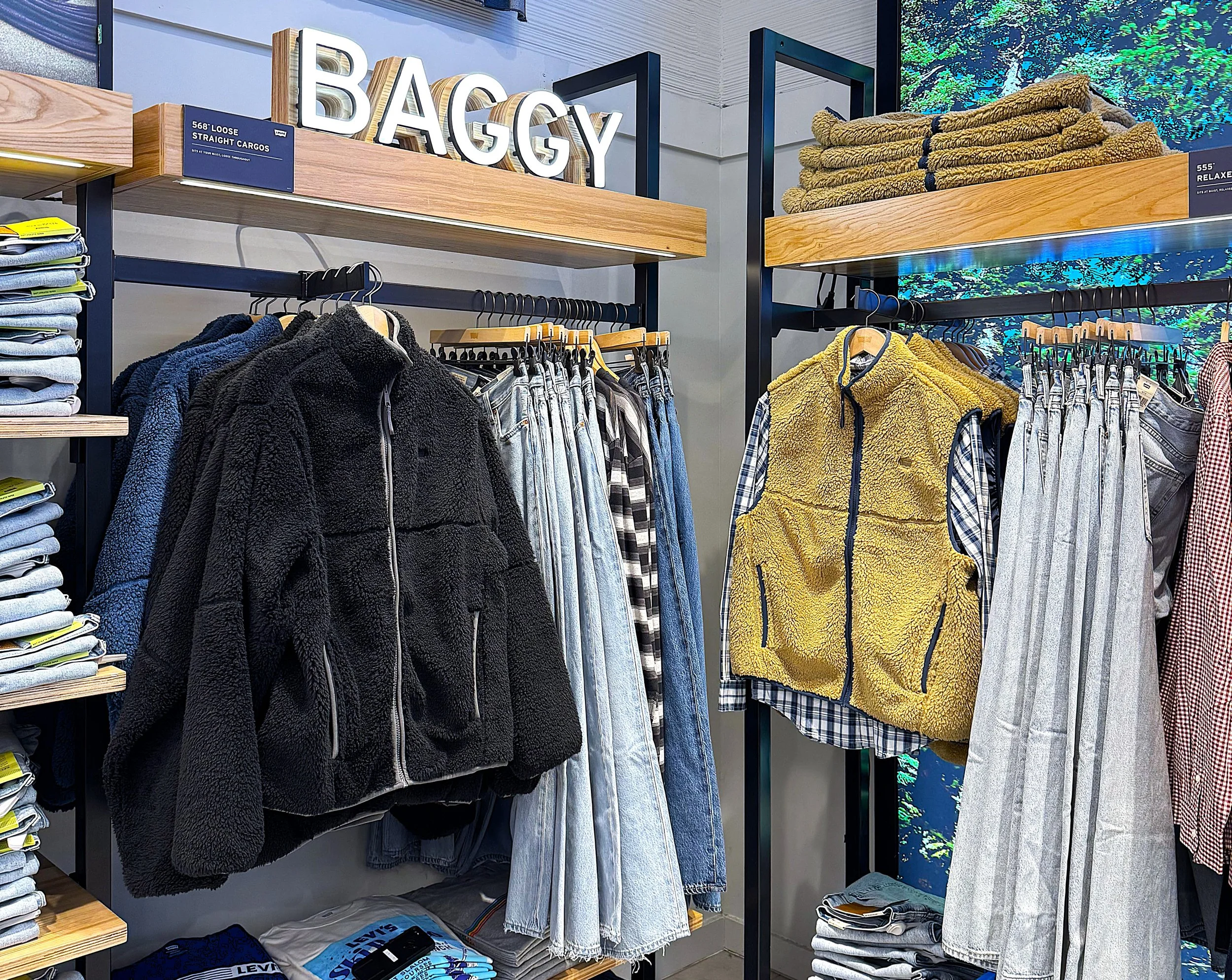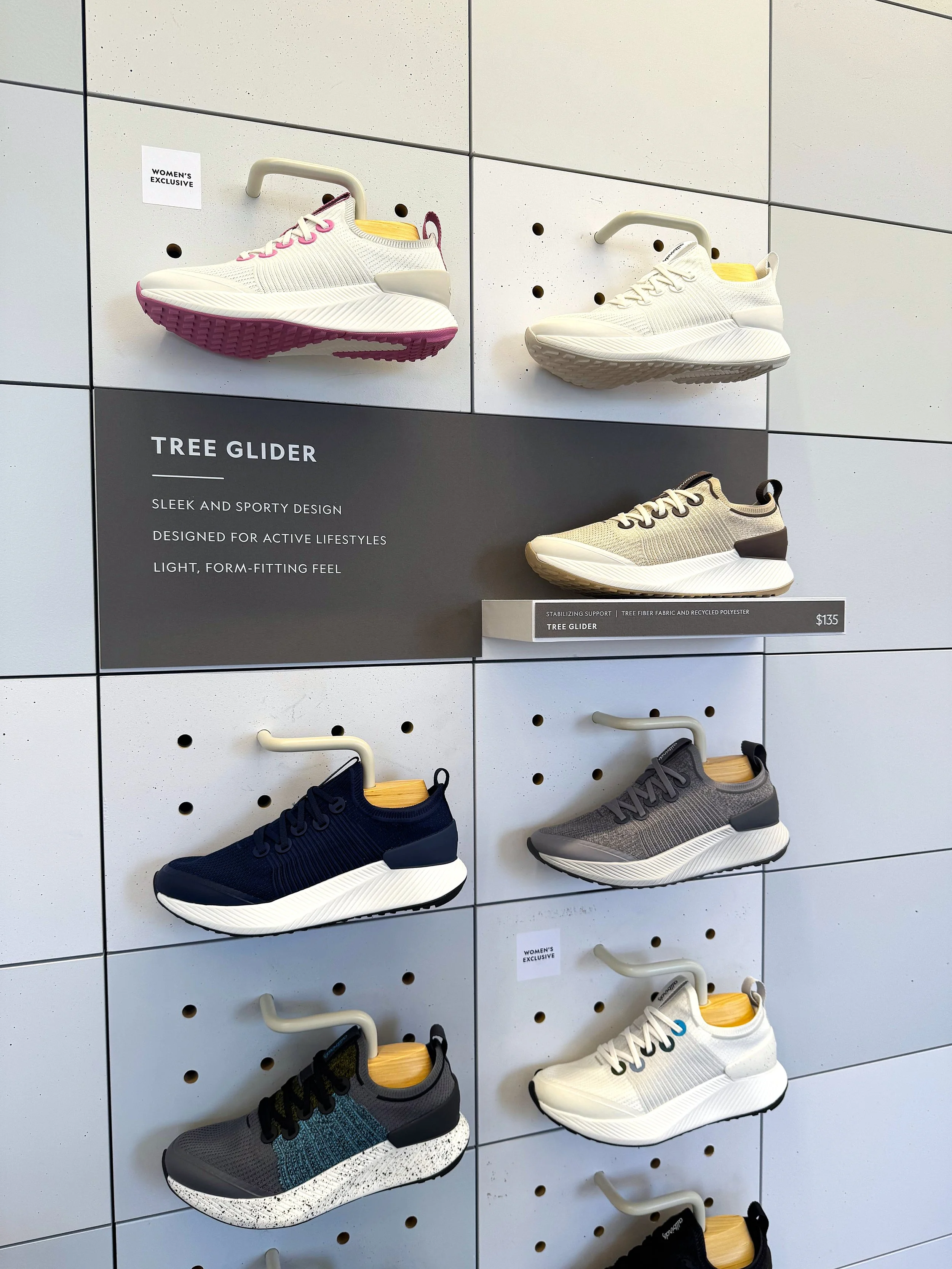Why POP Displays Matter in Outdoor Retail
Outdoor gear is technical, purpose-built, and designed to meet a wide range of needs. Today’s outdoor enthusiasts are fortunate to have endless product options tailored to their lifestyle. But with that abundance comes a challenge: it’s easy for customers to feel overwhelmed by the details and unsure about which product is right for them.
That’s where Point of Purchase, or POP displays, come in. We think of POP as a silent sales associate, there to educate, guide, and give customers the confidence to choose the right product. From sizing and style comparisons to warmth ratings and breathability callouts, POP displays help bridge the gap between simply browsing and buying.
In this article, we’ll explore the benefits of POP, the types most relevant to outdoor apparel retailers, and smart tips for design and execution. Because when it’s done right, POP doesn’t just support the shopping experience, it shapes it.
Cotopaxi Portland (April, 2024) uses a large POP display to tell a material story about their packs.
What’s The Difference Between POP Displays and Other Signage?
While both POP displays and other signage serve important roles in a retail environment, their purposes are distinct. For example, promotional signage is used for brand awareness, messaging, or sales, while wayfinding helps customers navigate and understand where they are and what broad categories they’re exploring.
POP, on the other hand, lives closer to the product and is all about decision support. It communicates why a specific item might be the right choice by highlighting features, benefits, comparisons, or use cases. For outdoor retailers, especially, where technical differences can be subtle but significant, POP offers just-in-time education that helps turn consideration and curiosity into a confident purchase.
North Face, Seattle (April, 2024) uses overscaled product hangtags with infographics to differentiate between jackets.
Benefits of POP Displays in Outdoor Retail
POP displays greatly impact customers' shopping and have a fantastic return on investment. This is because POP displays increase product visibility, lead to quicker decision making, and drive sales by drawing attention to key features, seasonal offerings, or standout items. Whether it’s choosing the right warmth level in a jacket or the best fit in a hiking boot, effective POP helps customers better understand the product, ensuring they walk away with the product that’s truly right for them. This not only improves satisfaction but also reduces returns.
POP displays are also typically low-cost, easy to update regularly, and require less interaction between sales staff and the customer, as the displays help customers navigate and understand key differences in products that look similar to one another. They are the perfect way to increase sales without large investments!
Levis Fashion Island, Newport Beach (December, 2024) uses Category Wayfinding in conjunction with individual product-focused POP Signage.
Types of POP Displays for Outdoor Retail
In outdoor retail environments, POP displays come in a variety of forms, each serving a unique role in the customer’s journey. These displays aren’t one-size-fits-all; they’re tailored to highlight key product features, guide comparison, and bring seasonal or campaign-driven storytelling to life. The right mix of POP types helps shoppers make faster, more informed decisions while elevating the overall in-store experience. Below, we’ll break down the most common types of POP displays used in outdoor apparel and gear retail, along with when and how to use them effectively.
Lulu Lemon Washington Square, Portland (December, 2024) uses multiple levels of communication to help the customer navigate the right footwear.
Footwear Wall POP Signage
Footwear walls often feature multiple styles that can appear quite similar. POP in this context helps call out what makes each shoe unique, whether it’s waterproofing, tread pattern, weight, or ideal terrain. These small signs guide customers to the right fit and function based on their specific activity and help reduce overwhelm, give sales associates time to get to them, and increase the conversion rates.
Arcteryx Fashion Island (December 2024) uses Shelf Talkers to share key features without having to unfold product.
Buck Mason Fashion Island (December 2024) uses Shelf Talkers to share key features.
Shelf Talkers
Shelf talkers are compact POP displays placed directly on or near shelving. They're ideal for navigating and calling out key features and benefits of apparel or gear in a fast, scannable format. In outdoor retail, they might call out things like UPF protection, insulation level, or packability, supporting a quick understanding of technical products without interrupting the flow of shopping.
Cash Desk Signage
Cash wraps are a powerful, often underutilized, storytelling space. POP at the cash desk can spotlight bestsellers, limited-edition gear, or seasonal add-ons. It’s also a great location to reinforce brand values or remind customers of product care tips, warranties, or loyalty programs, helping strengthen post-purchase confidence.
Brixton Fashion Island (December, 2024) uses POP to quickly explain the difference in their pant fits.
Fit Guides
Fit guides are longer-term POP displays that compare similar styles across fit, warmth, performance level, or activity use. These are especially useful in categories like jackets, base layers, or footwear, where choosing the wrong item can impact comfort and performance. A well-placed fit guide builds shopper confidence and reduces returns.
North Face, Seattle, (April, 2024) visualizes equipment size comparisons in a life size display, to help the buyer to pick the right pack for their trip.
Size Guide
Size guide POP displays are a powerful tool for helping customers compare product variations quickly and confidently, especially when size impacts use, function, or packing capacity. In outdoor retail, these guides are particularly useful for items like duffel bags, backpacks, and outerwear, where visual differences can be subtle but meaningful.
Size guides reduce hesitation, increase product understanding, and help customers walk away with the right gear for their adventure. They’re also a great long-term POP solution, often staying relevant season after season with minimal need for updates.
Marine Layer Fashion Island, Newport Beach (December, 2024) shouts out current conditions to remind shoppers that now is the perfect time to purchase.
Seasonal Signage
Rotating seasonal POP helps bring freshness to your retail floor as well as guide customers to the perfect purchase. These POP elements highlight products aligned with current conditions, like rain jackets in spring, baselayers in winter, or trail gear in summer. They offer a simple but effective way to refresh storytelling and guide customers to timely, relevant items.
Arcteryx LaBrea (December, 2024) calls attention to their standout hardshell jacket.
Allbirds Abbot Kinney (December 2024) uses a Footwear Wall Highlighter to draw attention to a key product.
Highlighters
Highlighters are targeted POP pieces that call attention to a single standout product, often a new arrival, hero item, or best-in-class performer. These are typically found on footwear or gear walls, drawing attention to top tech, unique benefits, or standout reviews. They’re meant to pull focus and create product authority quickly.
Best Practices for Effective POP Displays
Creating impactful POP displays is about more than just placing a sign next to a product, it’s about thoughtful storytelling. Great POP design considers visual clarity, strategic positioning, and materials that align with your brand. When done right, these displays enhance the shopper experience and seamlessly integrate into the store environment without overwhelming it. Below are key best practices to keep in mind when designing and implementing POP in outdoor retail spaces.
Nike at the Americana (December, 2024) uses small icons to describe the fit and style of each pant, helping customers quickly understand which products they want.
Designing POP Displays
When it comes to POP, less is more. Design should guide the customer, not overwhelm them. Keep messaging concise and legible, using bold typography, high-contrast colors, and straightforward language. The most effective displays communicate the essential information quickly and clearly by giving the smallest amount of information possible while still being informative. Think major features and new technologies, core benefits comparing similar products, or a single positioning statement. While some brands like to include price, others stick with just positioning statements and allow more flexibility for future price changes. POP displays also create an opportunity for interactive elements, such as allowing the customer to engage with the product through touch and feel.
Title Nine Portland (April, 2024) uses two layer of POP on their tables, one is photo-driven and the second asks the customers to get up close and personal to read the information, while giving the product the space it needs to shine!
Placement for POP Displays
Placement of POP matters just as much as what it says. Signage needs to be readable from where the customer will view it, directly next to the product it refers to, and large enough to communicate, but not so large that it's taking up valuable selling space. Strategic placement ensures the display supports navigation and enhances the shopping journey.
Cotton On Prudential Center Boston (October, 2024) uses recyclable, durable, and easy-to-switch-out materials for their POP.
Materials for POP Displays
Material choice affects both the durability, flexibility, and the perception of your POP display and brand. Common options include cardstock placed in metal holders for a clean, cost-effective look, or rigid substrates with easelbacks that can stand independently on shelves or counters. For a more polished, long-lasting display, many retailers opt for rigid signage mounted in wood or metal bases or frames, which offer a more premium brand feel. Metal frames with magnetic graphics or recyclable materials are a smart choice for seasonal flexibility, allowing for quick swaps without replacing the entire structure. For high-impact moments, custom metal executions with integrated lightboxes create a bold, elevated look that draws attention and reinforces brand quality.
Above all, ensure the materiality of your POP reflects the quality and aesthetic of your overall brand, as it should look and feel as intentional as the product it supports.
Final Thoughts on POP Displays in Outdoor Retailers
In a retail environment filled with choice, POP displays play a vital role in guiding, educating, and converting shoppers, especially in the outdoor industry where product details truly matter. From helping customers quickly understand differences between technical gear to reinforcing brand storytelling at the shelf level, POP acts as a silent but powerful salesperson. Whether you're highlighting a best-seller, launching a seasonal campaign, or simplifying complex product comparisons, investing in smart POP design is a simple way to make a big difference.
Ready to Create an Unforgettable Retail Experience?
Whether you're looking to execute a campaign launch, refresh your current store, or create a completely new store design, our team is here to help bring your vision to life with our key services. With over 15 years of architecture, in-house brand, and design agency experience for influential brands, including HOKA, Arc’teryx, Nike, Adidas, and Garmin, Feels on Brand is the go-to retail experience design studio for creating unforgettable retail spaces. Together, we'll help navigate designing and implementing your next retail brand experience.
Curious what the return on investment is for store improvements? We’ve taken out the guesswork with our easy-to-use ROI calculator. Simply input your store's current metrics, and our calculator does the rest.















